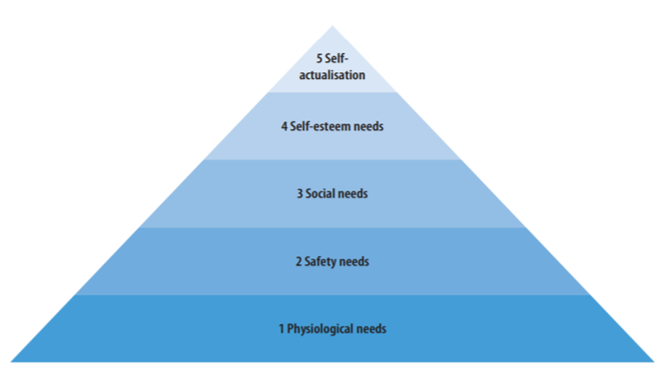Maslow's Hierarchy of Needs
1/7
There's no tags or description
Looks like no tags are added yet.
Name | Mastery | Learn | Test | Matching | Spaced |
|---|
No study sessions yet.
8 Terms
Hierarchy of Needs
employees level of need bust be satisfied before moving up to the next level. once a need is satisfied it is no longer effective in motivating the employee

Physiological needs
physiological needs - basic needs such as food, water, air, shelter, and other physical requirements
providing the employee with a job
payment for the job
Safety needs
security and protection from physical and emotional harm
creating job security
ensuring the employee has safe annd healthy work conditions (OH&S, sexual harassment and bullying policies in place)
superannuation and insurance
competent, consistent and fair management
Social needs
love, belonging, affection, affiliation, acceptance, and friendship in peer groups
friendly work associates
organised employee activities (e.g. birthday celebrations, meals, parties, sporting activities)
Self-esteem needs
external needs of status, recognition and attention
internal needs of self-respect, autonomy and achievement
job title and task responsibilities
good performance management rating
merit rewards (bonus)
promotion
pay linked to status of position
prestigious workplace facilities
Self-actualisation
ultimate need: personal growth, achieving own potential, s- elf-fulfillment, and using own creative talent
challenging work allowing for creativity
participative decision-making
opportunities for personal growth and advancement
Advantages
allows management to develop an understanding of individual needs - all employees needs are different
allows management to be aware that employees will be at different stages of development and they will need to be motivated using a variety of methods
theory is fairly easy to understand - most managers should be able to make use of it and employees should relate to it
Disadvantages
every employee may be at a different stage, can be time consuming for a manager to identify what stage each employee is at
a manager making use of the theory may struggle to identify the stage at what each employee is at
very simplistic and says one strategy should satisfy one need at a time, but should satisfy more